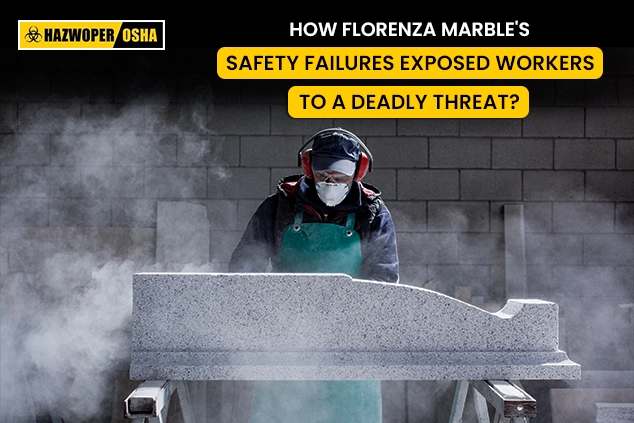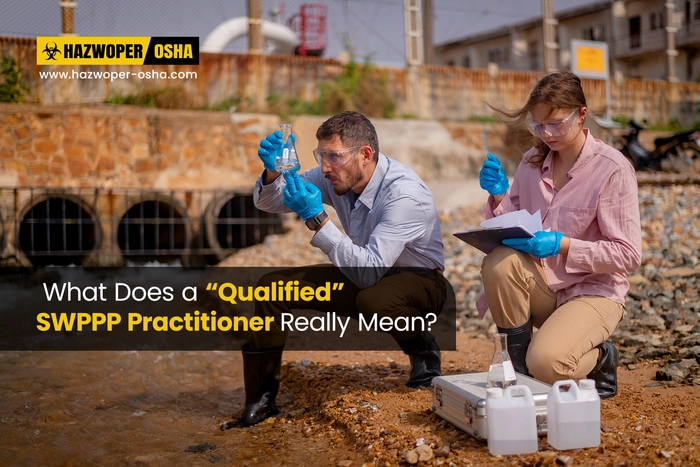How Florenza Marble's Safety Failures Exposed Workers to a Deadly Threat

Introduction:
The quality of air significantly deteriorates in facilities where hazardous substances such as silica dust are prevalent. The drop in air quality affects the respiratory health of the employees, if proper measures for prevention and protection are not in place. Recently a countertop manufacturer based in Chicago got penalized by OSHA as it failed to protect its workers from respiratory hazards. Their hefty fine highlights the severe legal and financial repercussions of non-compliance. This blog post is about the safety violations found and the importance of adhering to rigorous air safety standards at workplaces to ensure workers' safety and well-being.
What Happened at Florenza Marble & Granite?
The Florenza Marble & Granite agency's 31-year-old employee needed a double lung transplant due to silicosis caused by workplace exposure to silica dust. During an inspection, OSHA learned about the ailing worker and then proposed more than $1 million in penalties against the company. The charges against the company were not protecting the workers from the danger of silica dust. During an inspection in February 2024, OSHA conducted an air sampling of the facility and found that workers were working in the haze of dust in the facility. The investigation also disclosed that a 31-year-old worker and his father, who also worked there, needed a silicosis-related lung transplant. Father and son were not told about the dangers of silica exposure. A third worker in the factory also had unknown work-related lung disease. The silica dust levels were up to six times more than the allowable limit, and the company was neglecting essential safety measures such as dust control and proper respirator use.
OSHA's Legal Action and Penalties Against Florenza Marble & Granite?
As a part of legal action, OSHA has proposed over $1 million in penalties as the company failed to protect the workers from the hazardous silica dust exposure. Additionally, eight egregious willful violations, 20 severe violations, and four willful violations were also cited against this company because the employer didn't establish safety programs or offer medical monitoring for its workers.
Osha's investigation found the following violations:
- Employer did not establish the baseline of employee health to help monitor the silica exposure.
- No medical surveillance was performed to monitor the exposure.
- No engineering and administrative controls were applied to reduce the silica dust levels at the workplace.
- Workers were being exposed to unsafe silica dust levels.
- No respiratory protection program was implemented.
OSHA Chicago Regional Administrator Bill Donovan stated that:
Silica dust levels almost six times higher than the permissible levels were found by our compliance officers. The owner took no action to protect their workers from exposure. The situation became worse as the owner didn't care about their employees. In fact, two insurance carriers let go of the company as it was defiant about workplace safety standards.
A hazard alert was produced by OSHA that particularly disclosed worker exposure to silica during the countertop installation and production. The alert described that the countertops contained high amounts of silica, a naturally found mineral. Surprisingly, some countertops might contain up to 90% of the minerals. All these violations and negligence led to legal repercussions along with major risks to employee health, showing why workplace safety standards should be non-negotiable.
Why is Constant Silica Exposure at the Workplace a Silent Killer?
Constant silica exposure leads to detrimental health effects that develop with time without instant symptoms, making it a silent killer. Silicosis is a severe lung disease that occurs due to prolonged silica dust inhalation. Silicosis causes scar tissue formation in the lungs, which reduces the lung's functionality and, over time, causes respiratory failure. Silicosis takes years to develop and mostly stays undetected until major damage has happened. Silicosis leads to the following major health issues:
- Cancer Risk: Silicosis not only weakens the lungs but also boosts lung cancer chances. There is a well-documented relationship between silica dust exposure and different forms of cancer, making it a severe health concern for the hazardous occupations such as mining, construction, and stone processing.
- Systemic Effects: Apart from lung health, silica exposure leads to systemic health issues such as kidney diseases, cardiovascular problems and chronic obstructive pulmonary diseases (COPD), autoimmune disorders. All these conditions happen as the body responds to the inhaled silica particles, which leads to damage and inflammation within the body.
- Deferred Symptoms: Silicosis symptoms appear after years of exposure, including shortness of breath, constant cough, and fatigue. The delayed symptoms lead the workers to believe in a false sense of security, who may not pick out the cumulative risks until it is too late.
All these health issues make silica exposure a major and underestimated threat to health, deserving the title of a silent killer. Awareness and preventive measures, including workplace monitoring and safety PPE, must mitigate these risks and keep workers safe from the long-term consequences of silica dust inhalation.
How to Prevent Silica Exposure at the Workplace?
The following key strategies can help prevent silica dust exposure in the workplace:
- Conduct a thorough risk assessment to determine the presence of silica dust and exposure levels to create control measures.
- Minimize dust generation and its dispersion by using wet methods, on-tool extraction, and adequate ventilation.
- Keep the work area clean using wet cleanup methods and schedule high-exposure tasks during off-peak hours.
- Make sure the employees are using suitable respirators, protective clothing, and respiratory equipment, and they should have gone through proper fitness tests.
- Workers should be educated about the risks of silica, control measures, and using PPE. To support this, HAZWOPER OSHA Training LLC is offering detailed OSHA Silica Awareness Training that is designed to equip employees with information about the hazards of silica in the workplace. To meet customers' needs across the USA, we offer this training in flexible formats such as online, onsite, and SCORM. As you choose our training program, you ensure that your team gets top-notch training to prevent silica-related health problems and keep the environment safe.
- Conducting regular health checkups of employees to catch early respiratory issues.
Implementing these safety measures can help protect your workforce from respiratory issues and maintain a safe working environment for all.
Conclusion:
This case reminds us of silica and the threats caused by other hazardous substances in the workplaces. Exposure to these substances not only causes detrimental health effects on employees but also leads to legal and significant financial penalties for the companies who ignore safety protocols. By sticking to proactive measures, performing risk assessment, implementing engineering controls, using proper PPE and training, and monitoring health of the workers, businesses can avoid costly violations and protect their worker's well-being.
REFERENCES:
Stone Industry Group, The Silent Killer: The Dangers of Silica Dust Exposure, May 10, 2022, https://sig.ltd/the-dangers-of-silica-dust-exposure/
Occupational Safety and Health Administration, August 26, 2024, Chicago countertop maker faces dozens of violations, $1M in penalties for not protecting workers, including 2 with incurable lung disease, from silica dust, https://www.osha.gov/news/newsreleases/national/20240826

 EN |
EN |  ES
ES






























































































































